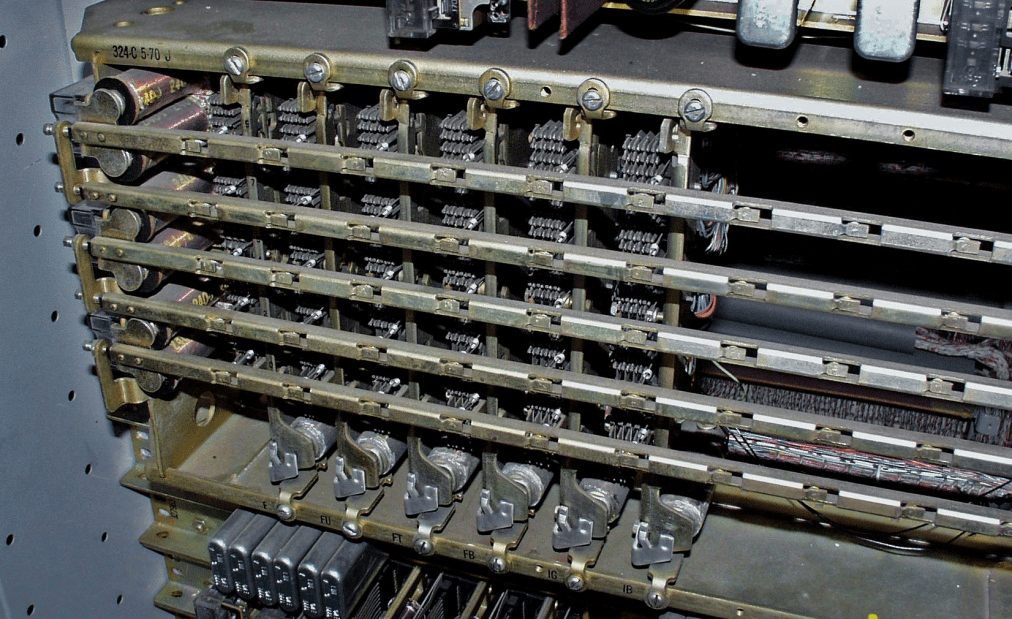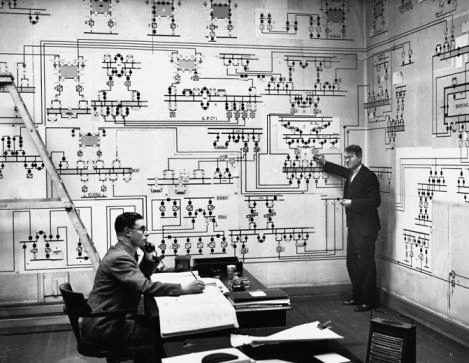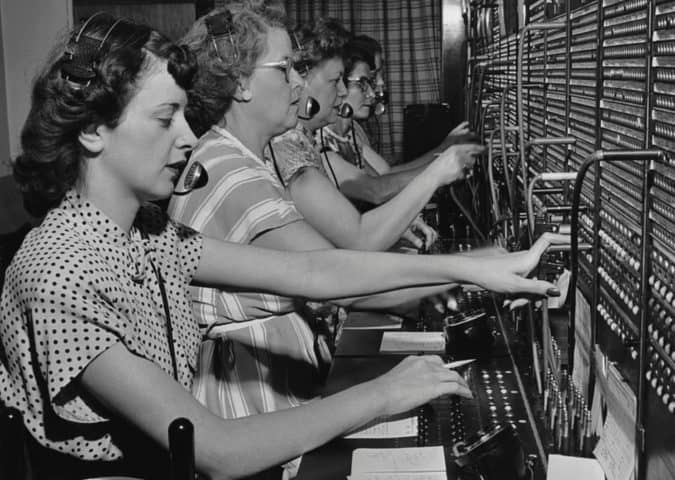In the previous part of our exploration we’ve had a swift flight over the history of some of the most defining predictions and laws that affected the development of Embedded Systems. We discussed how Moore’s, Kryder’s, Keck’s, and Nielsen’s laws helped to shape the future of Embedded Systems as we know them today.
Now it’s time to talk about what was actually happening to Embedded Systems from the very beginning till our days. Today we will regard Embedded Systems through the prism of two domains – Networking and the Internet of Things.
Networking: It all started with a phone
Computer Networking is historically tied to Telecommunications, because it was Telecoms that gave rise to the hardware and software that later started being used in computer networks. Essentially, Networking can be traced back to the time when the earliest telephones appeared – to the 1900s. Back in the old days, in order to make a phone call, you would need to call a wire center filled with human operators who manually connected each call. This involved obtaining the necessary information from the caller, hanging up, then conntecting the call and dialing the caller back. Obviously, connection speed left much to be desired – 15 mins on average.

In the 1920s, switching hardware first appeared in the Telecoms world, allowing the caller to stay online while the operator connected the call manually, now in about 2 mins. By 1950s, human operators were fully replaced with advanced switches, capable of connecting phone lines automatically. They were quite large and noisy, but able to process hundreds of calls at a time.

Later on, closer to 1980s, semiconductors were introduced to the technology world, enabling speed, efficiency and size improvements. The boundaries between Networking and Telecoms started to blur. In 1990s, the first Ethernet switches appeared, and they still play a huge part in the Networking world.
This is the time when predictions we discussed in the earlier part of our story came true. Special-purpose semiconductors started being used together with general-purpose CPUs.
Network switches are constantly communicating with each other, passing vast amounts of state data back and forth, collectively defining the best path for the information to flow. Each network protocol is a distributed algorithm with a purpose to establish an optimal network data flow for conditions at a given moment of time.
As power and capabilities of CPUs grew over time, the special-purpose chips were left with a single dirty job – moving packets between ports. It was the time when software “white collars” started dictating network operation policies, marking the decline of old Embedded Systems in Networking.
IoT: Automation and M2M
The Internet of Things (IoT) can be defined as devices, systems and peripherals existing in the same network infrastructure, able to exchange data and be controlled remotely and/or automatically according to specific scenarios. The notion is not as new as we might think – ideas about connecting “smart” devices was introduced back in 1980s. Also, automation and remote control over devices happened long before the Industrial IoT boom. For instance, Automation Faculty in our Lviv Polytechnic University was founded in 1962, and it was the source of IoT engineers we are now chasing down to staff our projects.
The IoT story is very similar to what we have seen in the Networking and Telecommunications domains. In industrial manufacturing for instance, it started with switchboards and manual operations that controlled industrial processes, similarly to operators connecting phone calls in wire centers. Human employees were moving plugs and switches to directly control motors, generators, pumps. Measurements from multiple instruments also had to be constantly taken manually to ensure proper operations. And similarly to Networking, electromechanical relays replaced routine human jobs and reduced the quantity of manual operations.

Embedded Systems’ debut in IoT can be marked when mechanical elements got miniaturized in integrated circuits and special-purpose computer chips that controlled the production.

Later on came the era of general purpose CPUs, and we quickly got production line controllers embedded in a small factory box not much different from a regular PC, beside packaging and operational conditions. This factory box ran familiar operating systems and applications written in well-known programming languages.
Eventually, the role of software started to be dominant in the world of IoT. Commodity computer components were connected to production lines and applications actually defining how they operate.
The industrial branch of technology evolution happens to have some deviations from the rest of technology world. Most of the differences lie in specific peripherals and connectivity systems. There is a wide range of network protocols, focused on high requirements of real-time delivery and availability. In the recent years Ethernet networks started to meet those requirements and there is a huge shift towards generic networking infrastructure in the industrial sector.
Of course, nobody is willing throw away working equipment and update the entire hardware infrastructure to make it Ethernet-compatible. As a result, PLVision has had a number of projects purposed for translating industrial communications to Ethernet “language” and vice versa. The main principle is to shape payload data optimally, and keep up with timing requirements. That’s where we entered machine-to-machine (M2M) communications world – an important predecessor and an integral part of modern IoT, – moving data back and forth from manufacturing lines to production controllers.
Are we done yet?
Almost! As promised, we’ve viewed the evolution of Embedded Systems in two major domains: Networking and IoT. In the next part of this story we will focus in Cloud, DC (datacenter), and SDN (Software Defined Networking) and how they were developing and changing together with Embedded technology. Stay tuned for the concluding part of our Embedded saga!
If you haven’t seen the first part of the story, you can always check back here.
Based on Leonid’s speech at Lviv IT Arena 2017 conference.
- 10 Reasons NOT to Deploy
SONiC NOS in Your Network - July 12, 2024 - Choosing the Right SONiC Version for Your Network Infrastructure - May 15, 2024
- SONiC-DASH: Integration for a DPU in 4 Steps - January 23, 2023




